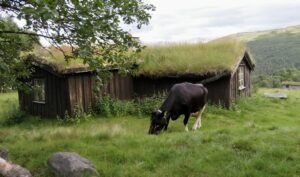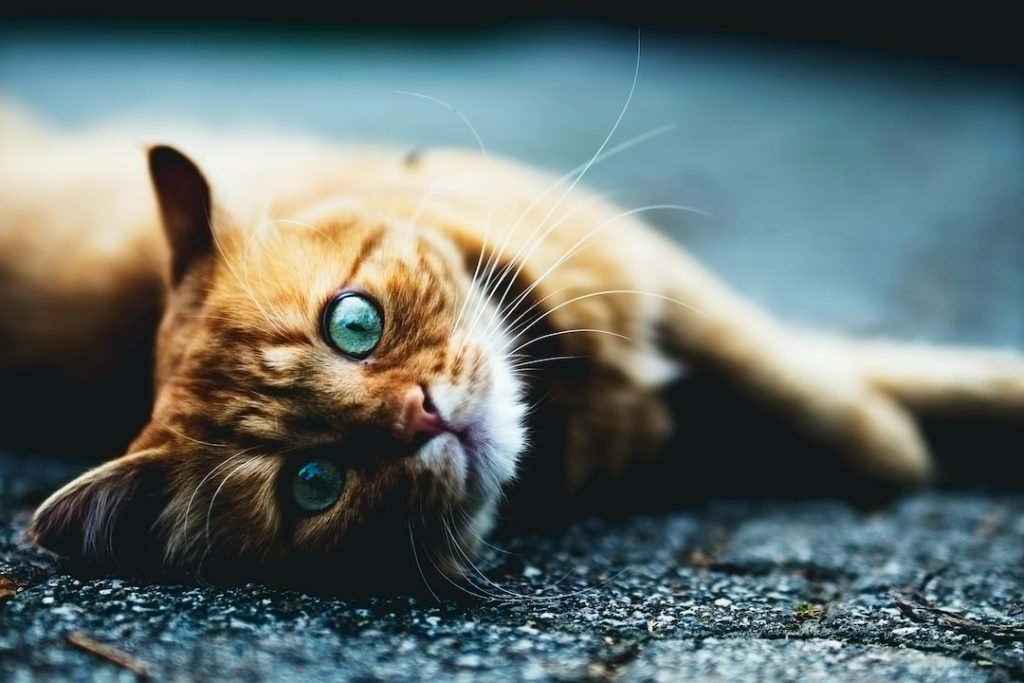

Norwegian Vocabulary for Pet Owners: Communicating with Animal Lovers
Learning Norwegian vocabulary for pet owners is important for several reasons. Firstly, if you are a pet owner living in Norway or planning to move there, knowing the local language will help you communicate effectively with locals and veterinarians. It will also enable you to understand and follow instructions related to your pet’s health and well-being. Additionally, learning Norwegian vocabulary for pet owners can help you connect with other pet owners in the community and build relationships.
When it comes to communicating with locals and veterinarians in Norway, knowing the relevant vocabulary is crucial. Being able to understand and express yourself in Norwegian will make it easier for you to navigate everyday situations related to your pet. Whether it’s asking for directions to a dog park or discussing your pet’s symptoms with a veterinarian, having a basic understanding of Norwegian vocabulary will ensure that you can effectively communicate your needs and understand the responses you receive.
Table of Contents
ToggleBasic Norwegian Phrases for Pet Owners
When interacting with other pet owners in Norway, it’s helpful to know some basic phrases for greeting them and their pets. Common phrases include “Hei! Hvordan har du det?” (Hello! How are you?) and “Koselig å møte deg og hunden din!” (Nice to meet you and your dog!). These phrases can help initiate conversations and create a friendly atmosphere.
If you need help or directions related to pets, phrases like “Unnskyld, vet du hvor nærmeste hundeutløp er?” (Excuse me, do you know where the nearest dog park is?) or “Kan du hjelpe meg å finne en veterinær?” (Can you help me find a veterinarian?) can come in handy. These phrases show that you are seeking assistance and are open to receiving guidance from locals.
When introducing your pet to others, phrases like “Dette er min hund/katt, [pet’s name]” (This is my dog/cat, [pet’s name]) can be used. It’s also polite to ask others about their pets, such as “Hva heter hunden/katten din?” (What is your dog/cat’s name?) or “Hvor gammel er hunden/katten din?” (How old is your dog/cat?). These phrases can help initiate conversations and show interest in other people’s pets.
Common Norwegian Words for Pet Food and Treats
Knowing the vocabulary for different types of pet food and treats is essential for pet owners in Norway. Some common words for pet food include “tørrfôr” (dry food), “våtfôr” (wet food), and “ferskfôr” (fresh food). It’s also important to know words for specific ingredients commonly used in Norwegian pet food, such as “kjøtt” (meat), “fisk” (fish), and “grønnsaker” (vegetables).
When ordering pet food and treats at a pet store or restaurant, phrases like “Jeg vil gjerne ha [type of pet food/treat]” (I would like to have [type of pet food/treat]) or “Har dere noe spesielt for allergier?” (Do you have anything specific for allergies?) can be used. These phrases will help you communicate your preferences and any special dietary needs your pet may have.
Norwegian Commands for Dogs and Cats
Learning basic commands in Norwegian is important for training and disciplining your pets. Some common commands for dogs include “sitt” (sit), “ligg” (lie down), “kom hit” (come here), and “bli” (stay). For cats, common commands include “kom hit” (come here), “nei” (no), and “hopp opp” (jump up).
When training and disciplining your pets, phrases like “Bra jobbet!” (Well done!) or “Nei, ikke gjør det” (No, don’t do that) can be used. It’s important to use consistent commands and phrases to ensure that your pets understand what is expected of them.
Norwegian Vocabulary for Grooming and Bathing Pets
Knowing the vocabulary for different grooming tools and products is essential for pet owners in Norway. Some common words for grooming tools include “børste” (brush), “kam” (comb), and “saks” (scissors). It’s also important to know words for different types of pet haircuts and styles, such as “klipp” (trim), “pelsstell” (coat care), and “bad” (bath).
When bathing and grooming your pets, phrases like “Det er på tide å bade deg” (It’s time to give you a bath) or “La meg børste pelsen din” (Let me brush your coat) can be used. These phrases will help you communicate your intentions to your pets and make the grooming process smoother.
Norwegian Words for Pet Health and Veterinary Care

Knowing the vocabulary for different types of pet illnesses and injuries is important for pet owners in Norway. Some common words for pet health include “sykdom” (illness), “skade” (injury), and “veterinær” (veterinarian). It’s also important to know words for different types of pet medications and treatments, such as “medisin” (medicine), “vaksine” (vaccine), and “operasjon” (surgery).
When communicating with veterinarians in Norway, phrases like “Min hund/katt er syk” (My dog/cat is sick) or “Jeg trenger hjelp til å behandle en skade” (I need help treating an injury) can be used. These phrases will help you convey the urgency of the situation and ensure that your pet receives the necessary care.
Norwegian Terminology for Different Pet Breeds
Knowing the vocabulary for different types of dog and cat breeds is helpful for pet owners in Norway. Some common words for dog breeds include “labrador retriever,” “golden retriever,” and “dachs.” For cat breeds, common words include “perser,” “maine coon,” and “siameser.”
It’s also important to know words for different physical characteristics and personality traits of pets. For example, words like “stor” (big), “liten” (small), “snill” (kind), and “aktiv” (active) can be used to describe pets. Being able to discuss different breeds and their characteristics with other pet owners can help you connect with them and share experiences.
Norwegian Vocabulary for Pet Accessories and Toys
Knowing the vocabulary for different types of pet accessories and toys is important for pet owners in Norway. Some common words for pet accessories include “halsbånd” (collar), “bånd” (leash), and “bur” (cage). For toys, common words include “ball,” “bamse” (stuffed animal), and “tyggeleke” (chew toy).
It’s also important to know words for different materials and features of pet accessories and toys. For example, words like “skinn” (leather), “nylon,” and “gummi” (rubber) can be used to describe the materials used in pet accessories. Being able to shop for pet accessories and toys in Norway will ensure that you can provide your pets with the necessary items for their well-being.
Resources for Learning Norwegian for Pet Owners
There are several online resources available for learning Norwegian vocabulary for pet owners. Websites like Duolingo, Babbel, and Memrise offer language courses that can help you improve your Norwegian skills. These platforms provide interactive lessons and exercises that focus on vocabulary, grammar, and pronunciation.
In addition to online resources, there are also books and courses specifically designed for learning Norwegian for pet owners. “Norwegian for Pet Owners” by Anne Lise Gjøstøl is a comprehensive guide that covers essential vocabulary and phrases related to pet ownership. There are also language schools in Norway that offer courses tailored to the needs of pet owners.
To practice and improve your Norwegian language skills, it’s important to immerse yourself in the language as much as possible. This can be done by watching Norwegian movies or TV shows, listening to Norwegian music or podcasts, and engaging in conversations with native speakers. The more you expose yourself to the language, the faster you will progress in your learning journey.
Finding a Norwegian Language School for Pet Owners
If you are looking to enroll in a language school in Norway, there are several options available. Some popular language schools in Norway include Lingu, Folkeuniversitetet, and Alfaskolen. These schools offer a range of courses for different levels of proficiency, including beginner courses for those starting from scratch.
When choosing a language school, it’s important to consider whether they cater to pet owners specifically. Some language schools may offer pet-related courses or activities that can help you practice your Norwegian skills while also learning about pet care and ownership in Norway. It’s also important to consider the location and schedule of the language school to ensure that it fits your needs and preferences.
In conclusion, learning Norwegian vocabulary for pet owners is important for effective communication with locals and veterinarians in Norway. It enables you to navigate everyday situations related to your pet’s health and well-being and helps you connect with other pet owners in the community. By familiarizing yourself with basic phrases, commands, and vocabulary related to pet ownership, you can ensure that you are well-prepared to take care of your pets in Norway.
If you’re a pet owner and want to learn Norwegian to better communicate with animal lovers, you might also be interested in this related article on Norwegian Vocabulary for Dog Commands. It provides essential commands and phrases to handle your dog like a pro. Check it out here.
FAQs
What is the article about?
The article is about Norwegian vocabulary for pet owners to help them communicate with other animal lovers.
Why is it important to learn Norwegian vocabulary for pet owners?
Learning Norwegian vocabulary for pet owners can help you communicate with other animal lovers in Norway and understand the local pet culture.
What are some common Norwegian words for pets?
Some common Norwegian words for pets include hund (dog), katt (cat), kanin (rabbit), hamster (hamster), and marsvin (guinea pig).
What are some Norwegian phrases for pet owners?
Some Norwegian phrases for pet owners include “Kan du passe på hunden min?” (Can you watch my dog?), “Har du sett katten min?” (Have you seen my cat?), and “Jeg trenger å kjøpe hundemat” (I need to buy dog food).
What are some cultural differences in pet ownership in Norway?
In Norway, it is common for dogs to be off-leash in public areas and for cats to have access to the outdoors. Additionally, there are strict laws regarding the treatment of animals and pet owners are expected to provide proper care for their pets.
Where can I learn more Norwegian vocabulary for pet owners?
You can learn more Norwegian vocabulary for pet owners through language learning apps, online courses, or by practicing with native speakers.
If you want to learn Norwegian, you can register for classes here. We look forward to hearing from you and helping you become fluent in Norwegian.





